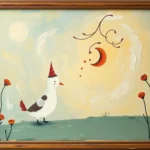
Dreams have long fascinated humanity, serving as windows into our subconscious. Among the myriad types of dreams that people experience, void dreams stand out as particularly intriguing and often unsettling. These dreams can evoke feelings of emptiness, disorientation, and confusion, leading many to ponder their significance. Understanding void dreams can not only shed light on our inner thoughts and fears but also provide a roadmap for personal growth and self-discovery.
Symbolism and Meaning
At the core of void dreams is the concept of emptiness. This theme can manifest in various ways, ranging from a feeling of being lost in an endless abyss to encountering vast, featureless landscapes. The symbolism embedded in these dreams can be interpreted through multiple lenses:
-
Emotional State: A void may represent a lack of fulfillment or an emotional vacuum in waking life. Individuals experiencing dissatisfaction in relationships, careers, or personal ambitions may find themselves dreaming of vast emptiness as a reflection of their inner turmoil.
-
Fear of the Unknown: The void can also symbolize a fear of the unknown or uncertainty about the future. This fear can stem from significant life changes, such as job loss, divorce, or transitioning into new roles. The vastness of the void may mirror the anxiety associated with stepping into uncharted territory.
-
Existential Reflection: For some, void dreams can prompt deeper existential questions about purpose and meaning. The absence of structure or form in the dream may serve as a metaphor for feelings of insignificance or a search for one’s place in the world.
From a psychological perspective, void dreams can also be seen as a manifestation of repressed emotions. The void might represent unacknowledged feelings or unresolved issues lurking beneath the surface of consciousness. This interpretation invites the dreamer to explore what might be missing or what needs to be addressed in their life.
Key Scenarios and Variations
Void dreams can present themselves in various scenarios, each carrying its unique nuances and implications. Here are some common variations and their potential interpretations:
-
Falling into a Void: This scenario often signifies a loss of control or a fear of failure. If you find yourself plummeting into an abyss, it may indicate anxiety about a situation in your life where you feel powerless or overwhelmed.
-
Wandering in a Featureless Landscape: Dreaming of traversing a barren, undefined space can indicate feelings of isolation or a longing for connection. It may suggest that the dreamer is searching for meaning or direction in their life but feels directionless.
-
Confronting an Empty Room: An empty room in a dream can symbolize a part of yourself that feels neglected or abandoned. This dream scenario may encourage self-exploration and reflection on what aspects of your life need attention.
-
Being Trapped in a Void: If you experience a sensation of being trapped in a void, it may indicate feelings of entrapment in your waking life. This could relate to a job, relationship, or situation where you feel stuck and unable to move forward.
-
Witnessing Others in the Void: Observing other people in a void during your dreams may suggest feelings of disconnection from those around you. This could indicate a desire for deeper relationships or a realization that others may also be struggling with their own emptiness.
Each of these variations offers a unique perspective on the dreamer’s emotional and psychological state. By analyzing the specific details of the void dream, individuals can uncover deeper meanings and insights tailored to their lives.
Real-Life Connections and Takeaways
Understanding void dreams is not just an exercise in interpretation; it can also serve as a powerful tool for personal growth. Here are some practical insights for readers seeking to connect these dreams to their real-life situations:
-
Journaling: Keeping a dream journal can help you capture the essence of your void dreams. Write down your thoughts, feelings, and any recurring themes. This practice can lead to a greater understanding of your subconscious and help identify patterns in your waking life.
-
Self-Reflection: Take time to contemplate what the void represents for you. Are there areas in your life where you feel unfulfilled? What fears or uncertainties might be manifesting in your dreams? Engaging in self-reflection can help you address underlying issues and foster personal growth.
-
Seek Connection: If your void dreams are indicative of feelings of isolation, consider reaching out to friends, family, or support groups. Building connections can alleviate feelings of emptiness and remind you that you are not alone in your struggles.
-
Set Goals: Use your dreams as motivation to set achievable goals. If you feel lost or directionless, outline steps toward personal fulfillment. Setting clear intentions can help you move away from feelings of void and toward a more purposeful life.
-
Embrace Change: If your dreams reflect fears of the unknown, try to embrace change as a natural part of life. Accepting uncertainty can free you from the anxiety that often accompanies transitions, allowing you to approach new experiences with curiosity rather than fear.
In conclusion, void dreams serve as profound reflections of our subconscious thoughts and emotions. By delving into the symbolism and variations of these dreams, individuals can gain valuable insights into their waking lives and emotional well-being. Engaging in self-reflection, journaling, and seeking connections can empower dreamers to navigate their fears, address unmet needs, and ultimately find meaning and purpose in their lives.
As you explore your own void dreams, reflect on what the emptiness may signify for you personally. Each dream is unique, and understanding its nuances can lead to a deeper connection with yourself and your life’s journey.







